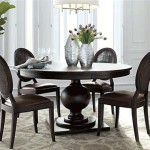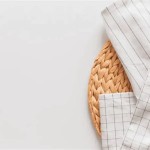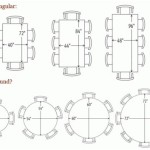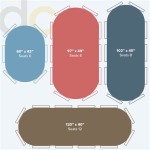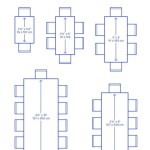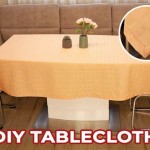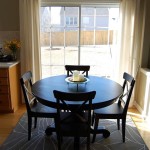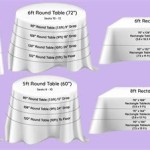How To Use Table Runners on Round Tables
Table runners offer a simple yet effective way to elevate the aesthetic of any dining setting. While often associated with rectangular tables, runners can also enhance the visual appeal of round tables, adding a touch of elegance and sophistication. However, using a runner on a round table requires a slightly different approach than with rectangular counterparts. This article explores various techniques and considerations for effectively using table runners on round tables.
Choosing the Right Runner
Selecting the appropriate runner is the first step in creating a visually appealing tablescape. The runner's size, material, and design significantly impact the overall effect. For round tables, the diameter of the table is a crucial factor in determining the appropriate runner length. A general rule of thumb is to allow the runner to drape approximately 6-12 inches over the edge of the table. This creates a visually pleasing waterfall effect without being a hazard for seated guests. A runner that is too short can appear awkward and disproportionate, while one that is too long can be impractical and disruptive.
The material of the runner also plays a key role in the overall aesthetic. Natural fibers like linen, cotton, and burlap offer a rustic and casual feel, while materials like silk, satin, and velvet lend a more formal and elegant touch. The choice of material should complement the existing décor and the occasion. For everyday use, durable and easy-to-clean materials are recommended. For special occasions, more luxurious and delicate fabrics can be considered.
The design and color of the runner should harmonize with the tablecloth, if one is used, and the overall color scheme of the room. Solid colors offer versatility and can easily be paired with patterned tablecloths or placemats. Patterned runners can add visual interest but require more careful coordination with other elements of the tablescape. Consider the existing décor, the occasion, and the desired ambiance when selecting the design and color of the runner.
Placement and Arrangement
The placement of the runner on a round table allows for more creativity than on a rectangular table. Several different arrangements can be utilized to achieve various effects. One common approach is to drape the runner across the center of the table, allowing it to fall evenly on opposite sides. This creates a classic and symmetrical look, highlighting the centerpiece and anchoring the table setting.
For a more dynamic and asymmetrical look, the runner can be placed off-center, diagonally across the table. This draws the eye across the table and adds a sense of movement to the tablescape. This arrangement is particularly effective on larger round tables where a centered runner might appear lost.
Another option is to use multiple runners. Two runners can be crossed over each other in an "X" formation, creating a dramatic focal point. Alternatively, several shorter runners can be placed radiating outwards from the center, resembling the spokes of a wheel. This arrangement adds a touch of whimsy and is particularly suitable for casual gatherings. Experimenting with different placements allows for customization and the creation of a unique and visually appealing table setting.
Pairing with Other Table Decor
Table runners on round tables work beautifully in conjunction with other decorative elements. Centerpieces, placemats, and chargers can be layered with the runner to create a cohesive and stylish tablescape. When using a centerpiece, consider its height and width in relation to the runner. A tall, slender centerpiece can complement a narrow runner, while a low, wide centerpiece might pair better with a wider runner or multiple runners.
Placemats and chargers add another layer of texture and color to the table setting. They can be placed directly on top of the runner or slightly offset to create visual interest. The shape of the placemats should complement the round table; round or square placemats are generally preferred over rectangular ones.
Finally, consider the overall color palette and theme of the table setting. The runner should complement the other decorative elements, creating a harmonious and visually appealing display. The use of complementary colors, contrasting textures, and varying heights creates a dynamic and engaging tablescape. Careful consideration of these elements elevates the dining experience and transforms a simple meal into a special occasion.

Table Runners For Round Tables Find The Right Runner

The Best Round Table Runner Ideas Arinsolangeathome

Table Runners For Round Tables Find The Right Runner

The Best Round Table Runner Ideas Arinsolangeathome

Table Runners For Round Tables Find The Right Runner

Hugedomains Com

How To Decorate With Table Runners Setting Ideas Tablecoversnow Com

31 Table Runner Ideas For Wedding Receptions 7 Will Steal Your Heart

The Best Round Table Runner Ideas Arinsolangeathome

Table Runners For Round Tables Find The Right Runner
Related Posts

